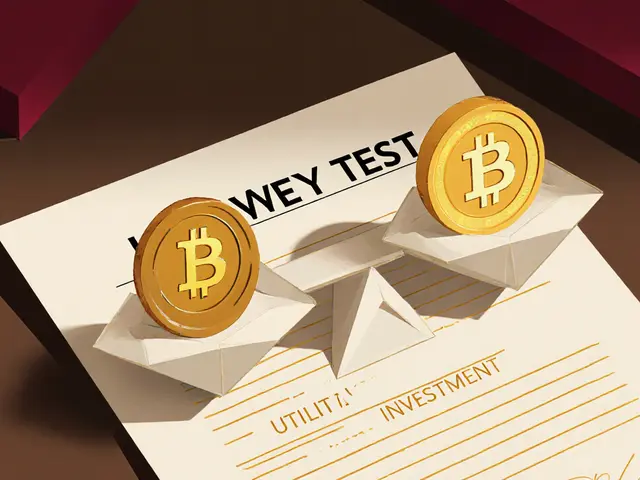Liquidity Pool Risk Calculator
Risk Assessment Results
Enter values and click "Calculate Potential Loss" to see your risk analysis.
Risk Factors Overview
Impermanent Loss
Occurs when token prices diverge from initial ratios. Can be mitigated with stablecoin pairs and careful selection of low-volatility assets.
Smart Contract Risk
Potential for exploits or bugs that could lead to total fund loss. Always audit protocols before providing liquidity.
Governance Risk
Admin privileges can lead to rug pulls or sudden changes in pool terms. Check if liquidity is time-locked and governance is decentralized.
Volatility Risk
High volatility increases impermanent loss. Monitor price movements and consider rebalancing strategies for concentrated liquidity.
Understanding liquidity pool risks is crucial for anyone dipping their toes into decentralized finance. While liquidity pools make token swaps frictionless, they also expose providers to a handful of hidden dangers. This guide walks you through each risk, shows why it matters, and gives practical ways to protect your capital.
Key Takeaways
- Impermanent loss hits hardest when paired tokens move apart in price.
- Smart‑contract bugs can freeze or steal every dollar you deposit.
- Rug pulls are often tied to unchecked governance and un‑locked liquidity.
- Stable‑coin pairings and diversified pools reduce most exposure.
- Active monitoring and gas‑aware rebalancing are essential for concentrated liquidity.
What Is a Liquidity Pool?
When you hear the term Liquidity Pool is a smart‑contract‑based reserve of two (or more) tokens that enables automated trading on decentralized exchanges (DEXs), think of it as a shared pot that anyone can add to or trade against. Instead of a traditional market maker, the pool relies on an Automated Market Maker (AMM) algorithm to price trades based on the current token ratios.
Who Supplies the Capital?
Anyone who deposits assets becomes a Liquidity Provider (LP) and earns a slice of the fees generated by swaps. In return, LPs hand over custody of their tokens to the Smart Contract that underpins the pool.
Major Risk Categories
Impermanent Loss
Impermanent loss occurs when the price of the two tokens in a pool diverges from their market price. The AMM constantly balances the pool, so if one token drops, the pool ends up holding more of that losing asset. When you withdraw, you might receive a smaller dollar value than if you had simply held the tokens outside the pool. The loss is "impermanent" only until you pull out; if the price gap narrows, the loss can shrink or disappear. However, prolonged divergence turns the loss into a permanent hit.
Smart‑Contract Vulnerabilities
Since the Smart Contract is the sole custodian of deposited funds, any bug or exploit can drain the entire pool. Notable hacks-like the 2022 “Compounder” breach-showed how a single unchecked function let attackers siphon tens of millions of dollars. Audits reduce risk but never eliminate it, especially for newer protocols that skip thorough third‑party reviews.
Market Volatility & Concentrated Liquidity
Traditional pools rebalance automatically, but newer designs such as Concentrated Liquidity (popularized by Uniswap V3) let LPs allocate capital to a price range they think will be active. If the market moves outside that range, the position goes "out‑of‑range" and stops earning fees. Re‑entering the range requires a transaction, which incurs gas costs that can erode profits, especially on congested networks.
Governance & Rug Pulls
Some projects retain admin privileges over the pool’s contract. If the admin can change the fee structure or withdraw the underlying tokens, they can execute a Rug Pull, dumping the native token into the pool, pulling out the paired asset, and leaving LPs with worthless holdings. Rug pulls often hide behind un‑locked liquidity and an absent or anonymous development team.
Stablecoin Pairings and Their Limits
Pairing a volatile token with a Stablecoin (e.g., USDC, USDT, DAI) reduces impermanent loss because the stablecoin’s price stays near $1. However, stablecoins carry their own counter‑party and regulatory risks-if a peg fails, the entire pool can lose value quickly.

How to Mitigate the Risks
| Risk | Typical Impact | Mitigation |
|---|---|---|
| Impermanent Loss | Reduced dollar value vs. HODL | Use stable‑coin pairs, choose low‑volatility assets, or rely on fee‑rich pools that offset loss. |
| Smart‑Contract Bugs | Loss of all locked funds | Only join audited pools, check audit reports, prefer open‑source contracts with community vetting. |
| Out‑of‑Range (Concentrated Liquidity) | Fee earnings stop, gas cost to rebalance | Set wider price ranges, monitor price movements, rebalance during low‑gas periods. |
| Governance/Rug Pull | Token value wiped out overnight | Verify that liquidity is time‑locked, inspect governance token distribution, avoid projects with single‑key admin. |
| Stablecoin Failure | Peg de‑pegs, losing $1 value | Diversify across multiple reputable stablecoins, watch audits and regulatory news. |
Practical Checklist for Liquidity Providers
- Read the smart‑contract audit summary. Look for a reputable auditor and a clear list of findings.
- Confirm liquidity is locked for at least 6‑12 months. Use services like zkLock or protocol‑native timelocks.
- Assess the token pair’s volatility. If both tokens are highly speculative, prepare for up to 30% impermanent loss in volatile markets.
- Calculate expected fee APR versus projected impermanent loss. If fees don’t cover the loss, consider a different pool.
- Set alerts for price‑range breaches if using concentrated liquidity. Tools like DexGuru can automate notifications.
- Factor gas costs into any rebalancing decision. On Ethereum, a simple rebalance can cost $15-$30 during peak times.
- Keep a portion of your portfolio in non‑pooled assets for emergencies. Liquidity provision should never be your entire exposure.
Real‑World Example
In March 2024, a new DeFi platform launched a ETH/XYZ token pool. XYZ was a brand‑new meme coin with a 150% price spike in its first week. LPs poured $20million into the pool, attracted by a 0.3% fee. Within two weeks, XYZ crashed 80% after the team sold half their holdings into the pool, triggering a rug pull. The remaining LPs ended up with a pool composition of 75% ETH and 25% near‑worthless XYZ, translating to an effective loss of over $12million. Those who had checked the token’s liquidity lock status would have seen that the team retained a “withdraw” key-an easy red flag.
Future Outlook
Newer AMM designs aim to reduce impermanent loss by using dynamic pricing curves or multi‑asset pools (e.g., Curve’s stablecoin‑only pools). Governance models are shifting toward multi‑sig wallets and time‑locked upgrades. Yet, the core trade‑off-capital efficiency versus risk exposure-remains. Treat each pool as a short‑term investment, not a set‑and‑forget savings account.
Frequently Asked Questions
What exactly is impermanent loss and how is it calculated?
Impermanent loss measures the dollar‑value gap between holding tokens in a liquidity pool versus keeping them in your wallet. The formula compares the product of the pool’s token ratios before and after price changes. In practice, a 50% price swing between two assets can generate roughly 15% impermanent loss for a 50/50 pool.
Can I recover from impermanent loss?
Yes, if the price gap narrows. The loss is only realized when you withdraw. Some LPs wait for market re‑convergence, while others rely on accumulated fees to offset the loss over time.
How do I verify that a pool’s liquidity is locked?
Most block explorers show the contract’s lock timestamp. Look for a function like lockUntil(uint256) or a token‑lock contract address. Third‑party dashboards often flag locked versus withdrawable liquidity.
Are stablecoin pools risk‑free?
Stablecoin pairs drastically cut impermanent loss, but they inherit stablecoin‑specific risks like de‑pegging, regulatory crackdowns, or audit failures. Diversify across multiple reputable stablecoins to mitigate that layer of risk.
What gas‑aware strategies help with concentrated liquidity?
Schedule rebalances during low‑traffic periods (e.g., early UTC mornings), batch multiple adjustments into one transaction, and use layer‑2 solutions like Arbitrum or Optimism where fees are an order of magnitude lower.





C Brown
Oh great, another DeFi guide pretending we all have a PhD in economics. If you thought impermanent loss was just a myth, think again – the math doesn’t lie. The guide’s “stable‑coin pairs are safe” line feels like a patriotic rally for naïve investors. Yet, you wisely mention audits, because without them the pool is just a sinkhole waiting to swallow the unwary.
Noel Lees
Nice rundown, especially the part about fee APR offsetting loss 😊. It’s refreshing to see a balanced take that actually helps newcomers gauge risk without scaring them off.
Raphael Tomasetti
The AMM’s constant‑product invariant (x·y=k) underpins every swap, so understanding that formula is key to grasping impermanent loss.
Jenny Simpson
While everyone sings the praises of stable‑coin pools, the hidden danger lurks in the governance layer – a single admin key can turn a benign pool into a rug pull nightmare, and that drama is often glossed over.
Marie Salcedo
Great job breaking down the risks! Keeping fees in mind can really help offset some of that impermanent loss.
Kristen Rws
I like the checklist, but dont double‑check the timelock dates – sometimes theyre set to a future block far beyond what the UI shows. Also, watch out for gas spikes, they can turn a small rebalance into a big loss.
Nilesh Parghi
One could argue that providing liquidity is a micro‑cosm of the larger market’s equilibrium, a gentle dance between risk and reward; yet it remains a humble act, reminding us that every transaction carries a whisper of impermanence.
Keith Cotterill
Ah, the lofty prose of DeFi literature, ever so eager to drape itself in the garb of erudition, while the average LP merely seeks a modest return; however, let us not be deceived by such flowery language, for beneath the veneer lies a tapestry of perilous threads, each demanding a discerning eye, each capable of ensnaring the unwary. First, impermanent loss, that sly specter, haunts any pair whose prices diverge, and its calculus, though mathematically elegant, remains unforgiving to those who ignore its gradual erosion. Second, the specter of smart‑contract vulnerabilities, a reminder that code, however audited, can conceal a single unchecked opcode, ready to unleash catastrophe. Third, governance centralization, a subtle tyrant, where a lone admin can, with a mere function call, drain the coffers, leaving liquidity providers bereft. Fourth, the volatility of concentrated liquidity, a double‑edged sword, promising higher fees yet punishing the inattentive with out‑of‑range penalties. Fifth, stable‑coin reliance, a false sense of security, for even the most reputable stablecoins have, in history, suffered de‑pegging crises that rippled through the ecosystem, shattering confidence. Moreover, the ever‑present menace of gas fees, those insidious costs that can swallow the modest gains of a single rebalance, especially on congested networks, demanding strategic timing and layer‑2 solutions. Additionally, the importance of time‑locks cannot be overstated; a pool without a proper lock is akin to an open vault, inviting opportunistic exploits. Furthermore, diversification across multiple pools, across varying risk profiles, serves as a prudent hedge against systemic shocks. In parallel, continuous monitoring, via tools like DexGuru or TheGraph, provides early warning signals, enabling proactive adjustments before losses crystallize. Lastly, the philosophical lesson: DeFi, much like any frontier, rewards those who blend curiosity with caution, who cherish transparency yet remain vigilant against complacency. In sum, treat each liquidity provision as a short‑term venture, not a perpetual safe haven, and you shall navigate the treacherous waters with greater grace. Remember, no audit is infallible, and even the most reputable firms can overlook subtle edge cases. Also, community sentiment, while not a metric, often hints at underlying issues before they manifest on‑chain. Finally, maintain a healthy proportion of your portfolio outside of pooled assets, for liquidity provision should complement, not dominate, your overall strategy.
Maggie Ruland
Well, that's a lot of words.
Joyce Welu Johnson
Understanding these risks can feel overwhelming, but breaking them into bite‑size steps-like checking the audit, confirming lock periods, and tracking fee APR-makes the process manageable and less intimidating.
Ally Woods
Meh, same old warnings about impermanent loss; guess nothing changes.
Fionnbharr Davies
If you’re new to LPing, start with a well‑audited, fee‑rich pool and keep most of your capital in liquid assets; this way you can test the waters without risking a substantial portion of your portfolio.
Narender Kumar
In the grand tapestry of decentralized finance, one must, with utmost solemnity, contemplate the gravitas of entrusting one's capital to autonomous contracts, lest hubris precipitate an irrevocable loss of assets.
Anurag Sinha
What they don't tell you is that the very architects of these protocols embed back‑doors, hidden within upgrade functions, granting a clandestine cabal the power to siphon funds under the guise of "governance"; stay vigilant, trust no one, and consider that the blockchain itself may be a façade masking deeper machinations.
Sabrina Qureshi
Wow!!! This guide is a roller‑coaster of emotions, fear, hope, and dread!!! The way it dissects impermanent loss is both terrifying and enlightening, and the mention of smart‑contract bugs sends shivers down my spine!!! Governance risks? Oh, the horror!!! Stable‑coin failures? My heart stops at the mere thought!!! Remember to lock liquidity, lock it tight, lock it forever!!! And never, ever ignore the gas fees, because they will devour your profits like a relentless beast!!!